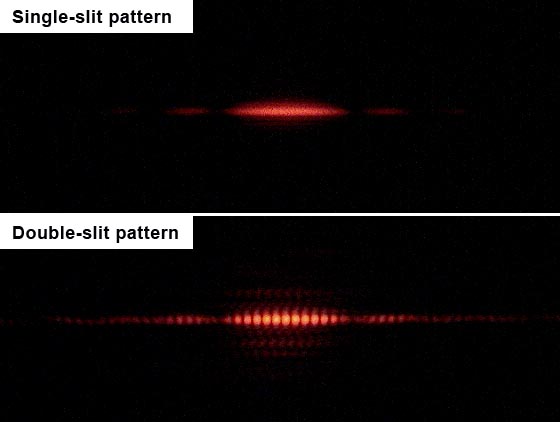Question #8868e
1 Answer
Single slit, double slit and the edge of a shadow.
If a single slit has a width comparable to that of visible light, e.g. ~0.020 mm or narrower, then diffraction of light passing through it can be observed. The light will spread out from the centre of the spot perpendicular to the orientation of the slit (i.e. to produce the horizontal diffraction pattern shown below the slit was vertical).

Image courtesy of Jordgette
The double slits cause the light to diffract as before but the diffracted light from each slit overlaps with the light from the other slit and interference occurs. Hence in the picture there are a series of bright and dark regions (called fringes). Interference is a separate wave phenomenon to diffraction.
Lastly, if you look at the shadow of an object you will notice that it is fuzzy. The fuzzy edge is there because light diffracts a small amount around the edge of the object. So there is not a crisp edge to the shadow,

